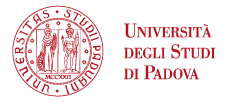Personale docente

Filippo Catani
Professore ordinario
GEOS-03/B
Indirizzo: VIA G. GRADENIGO, 6 - PADOVA . . .
Telefono: 0498279193
E-mail: filippo.catani@unipd.it
Insegnamenti
- GLOBAL IMPACTS OF MASS MOVEMENTS, AA 2025 (SCQ3102468)
- MONITORAGGIO E PREVISIONE DEI FENOMENI FRANOSI, AA 2025 (SCQ1098868)
- WATER AND GEOLOGICAL RISK MITIGATION, AA 2025 (INQ1095729)
- MONITORAGGIO E PREVISIONE DEI FENOMENI FRANOSI, AA 2024 (SCQ1098868)
- MONITORAGGIO E PREVISIONE DEI FENOMENI FRANOSI, AA 2023 (SCQ1098868)
- MONITORAGGIO E PREVISIONE DEI FENOMENI FRANOSI, AA 2022 (SCQ1098868)
- WATER AND GEOLOGICAL RISK MITIGATION, AA 2022 (INQ1095729)
- GEOLOGIA APPLICATA, AA 2021 (SC04103556)
- GEOLOGIA APPLICATA, AA 2020 (SC04103556)
Curriculum
Filippo CATANI, PhD, is Full Professor of Engineering Geology with the Department of Geosciences of the University of Padova and UNESCO Chair Associate on Prevention and Sustainable Management of Geo-Hydrological Hazards with the University of Florence (Italy). He is also an Invited Professor of Landslide Monitoring and Early Warning at KIGAM (South Korea) since 2011. He is a core member of the Joint Technical Committee JTC2 of ISSMGE, IAEG, ISRM on "Representation of Geo-Engineering Data in Electronic Form", and Member of NASA-JPL informal group on Earth Surface Changes. Since 2018 he is member of the Scientific Committee of the Centre of Civil Protection of the University of Florence. He has been recently Assistant to the President of the International Consortium on Landslides (ICL) (2011 to 2014), Member of the Board of Directors of the University of Florence (2008-2010), Representative of the University of Florence in the H2CU consortium of USA-Italy Engineering Universities (2016-2020), Member of the Directive Board of the Italian Association for Quaternary Studies (AIQUA) and Head of the Research Unit 2.61 of CNR-GNDCI. He is editor of the journals NHESS (EGU) and Geoenvironmental Disasters (Springer) and guest editor of the journals Landslides (Springer) and Remote Sensing (MDPI). Hs has been guest editor of special issues for several other journals.
After graduating in Geology and Geochemistry from the University of Florence, he received a post-graduate degree in Computer Sciences and a PhD in Engineering Geology (Politecnico of Milano, University of Padova and Ferrara). In 1996 he has been visiting PhD student at the University of Berkeley (California) where he studied fractal geometry applications to geomechanics. From 1998 to 1999 he has been visiting scientist at the Massachusetts Institute of Technology to work with the Parson’s Lab Hydrology Group for numerical modelling of shallow landsliding and geomorphometry. In 2000, he has attended the ISU’s Master of Space Studies programme at the SERTIT in Strasbourg, majoring in Remote Sensing. He participated to or co-coordinated several international RTD EC, ESA, ICL and national research projects on landslide and soil erosion hazard in FP6, FP7, H2020, EU-ECHO and Italian Civil Protection Department. He is advisor and reviewer for EC H2020 and Future Europe 2030 research projects. He is author of more than 100 papers in international journals mainly dealing with engineering geology, landslide hazard and risk analysis, remote sensing of Earth surface processes and landforms, landscape analysis, geomorphometry.
Pubblicazioni
Vedi file allegato
Area di ricerca
Latest interests in research: landslide hazard, machine learning applied to geohazards, monitoring and modelling of basin-scale surface processes, natural hazards, applications of remote sensing to landslide studies, oil & gas environmental impact and risk, surface monitoring in open-pit mines, scaling processes in geomorphology.
Tesi proposte
1. Analisi delle interazioni tra terremoti, tettonica e frane nel Sichuan (Cina).
La tesi ha come scopo lo studio delle correlazioni tra modifiche al reticolo e alla dinamica dei versanti a seguito di grandi terremoti e di come i knickpoints fluviali siano firme degli eventi passati e del loro stadio attuale di evoluzione.
Tesi Magistrale, sperimentale su dati digitali e numerici con impiego di software Matlab, TopoToolbox e altro.
2. Studio delle proprietà di geometria frattale degli ammassi rocciosi complessi e di come queste siano proxies geologici delle proprietà meccaniche e di stabilità. Tesi magistrale con impiego di rilievi di campagna (anche con droni), prove di laboratorio e analisi numerica con software di modellazione 2D e 3D geomeccanica + Matlab.





